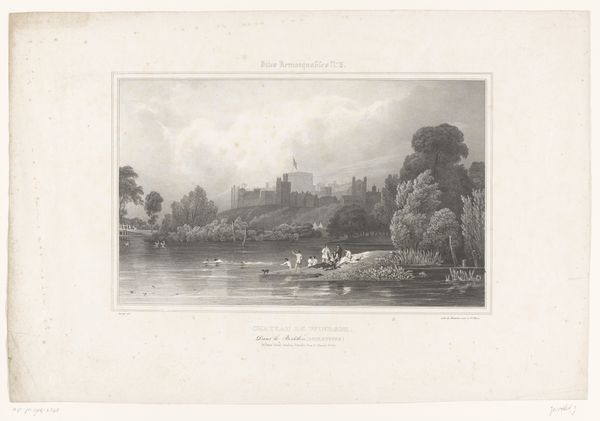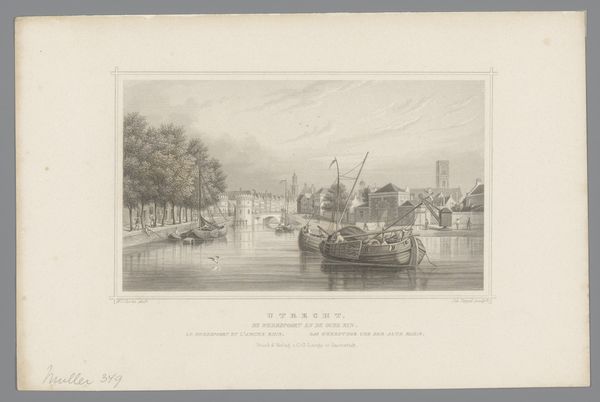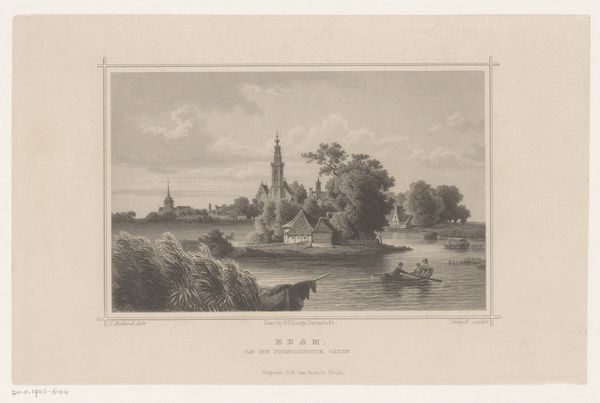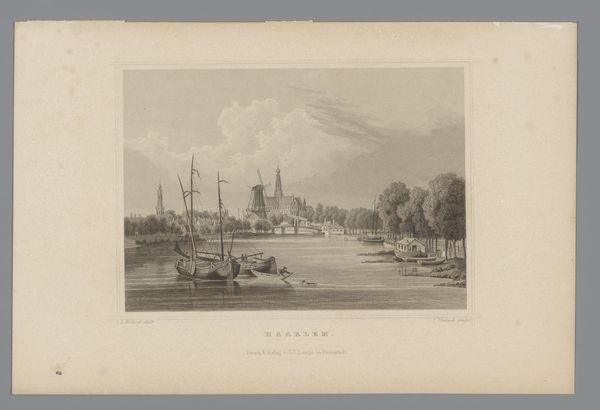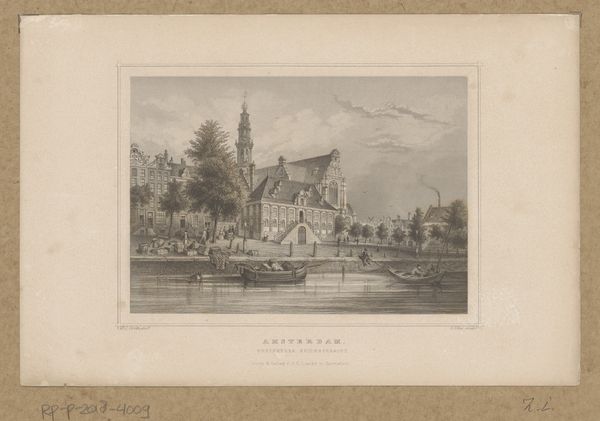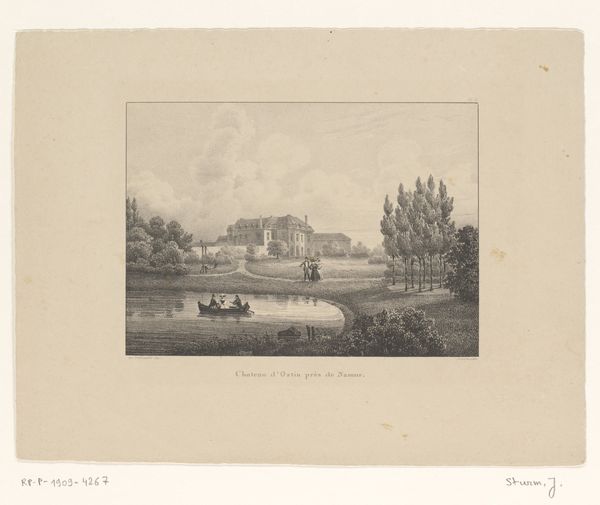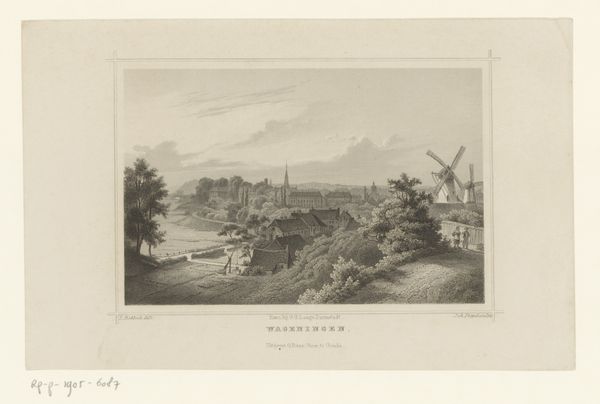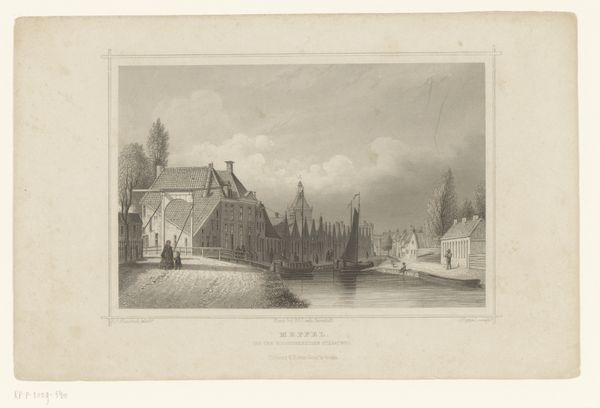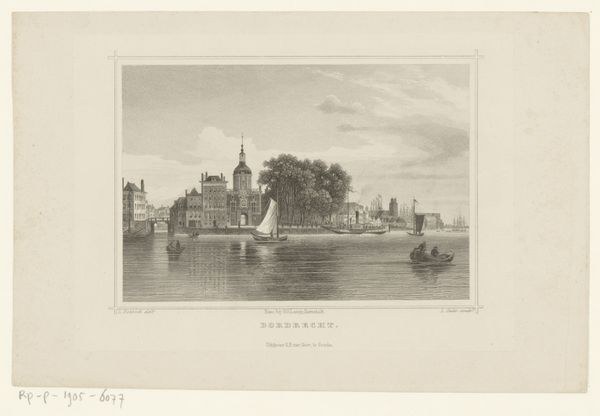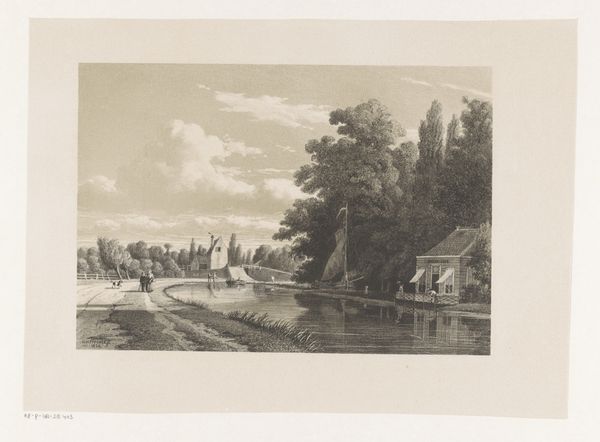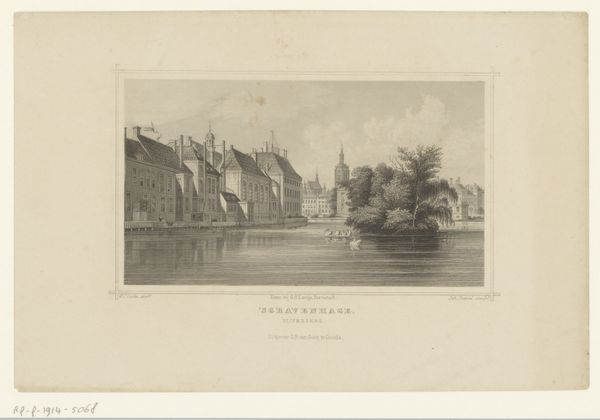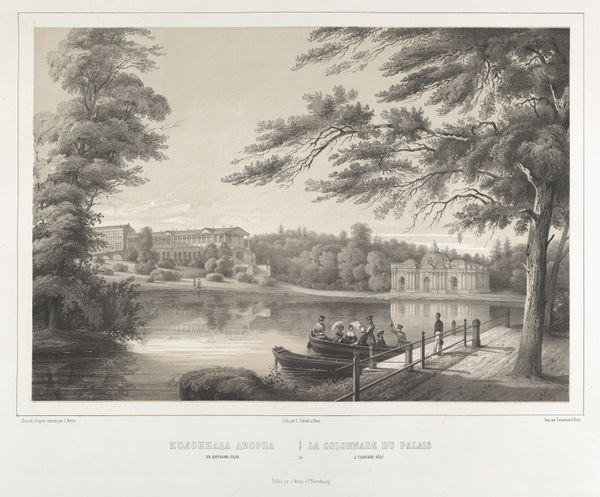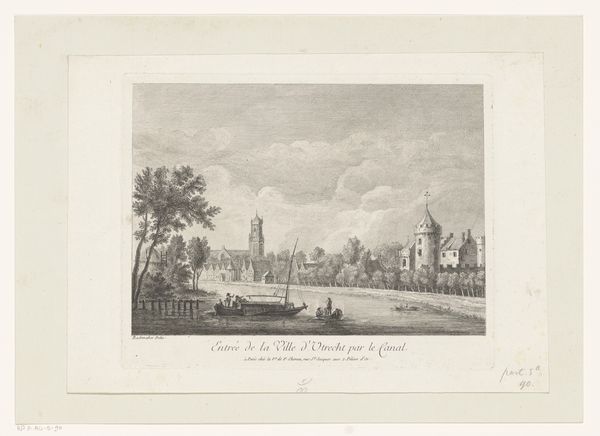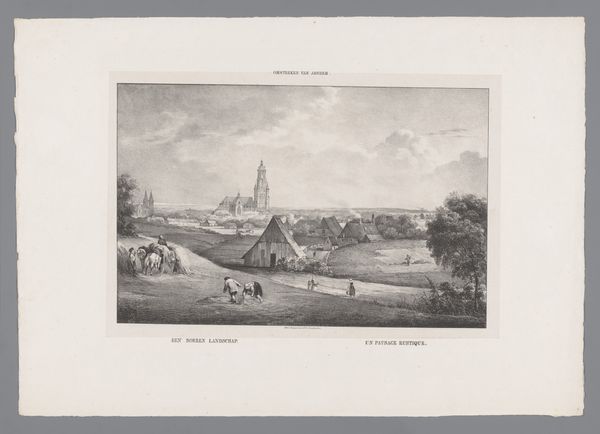
print, etching
# print
#
etching
#
landscape
#
cityscape
#
genre-painting
#
realism
Dimensions: height 163 mm, width 255 mm
Copyright: Rijks Museum: Open Domain
Editor: So, this is "Gezicht op Leeuwarden," a cityscape etching from 1858 by Johann Gabriel Friedrich Poppel. It feels very still and composed; the details are remarkable for a print. What aspects of the image catch your eye? Curator: Well, I'm immediately drawn to the choice of subject matter and its presentation. Cityscapes like this weren't just records of places; they were carefully constructed images that played a role in shaping civic identity and promoting local pride. Consider the viewpoint – we're seeing Leeuwarden not from within, bustling in the streets, but from across the water. What does that distance create, do you think? Editor: An air of calm, maybe? It feels staged and distanced, as you mentioned, more like a portrait of the city than a snapshot of daily life. Curator: Precisely. And consider the burgeoning middle class during this period and the increasing access to visual representations of their world. Prints like this made the familiar, Leeuwarden in this instance, into an object of aesthetic appreciation and civic belonging. How do you think this particular imagery - the ships, the towering church spire - contribute to that sense of civic pride? Editor: The ships definitely speak to trade and prosperity, while the church emphasizes tradition and stability. Curator: Exactly. It’s about constructing a narrative of the city, one designed to instill a sense of order, progress and established power. And it's not just about what’s included, but what's *not*. Notice any signs of poverty or social unrest? Editor: Not really, it’s all quite polished. Curator: Which reinforces my point about constructed narratives. It prompts a wider view of art’s public role. Seeing this etching really makes one consider what's represented and, more importantly, what's deliberately left unsaid about a place and time. Editor: That makes sense. It gives a richer context to the work beyond just aesthetics. Thanks!
Comments
No comments
Be the first to comment and join the conversation on the ultimate creative platform.
